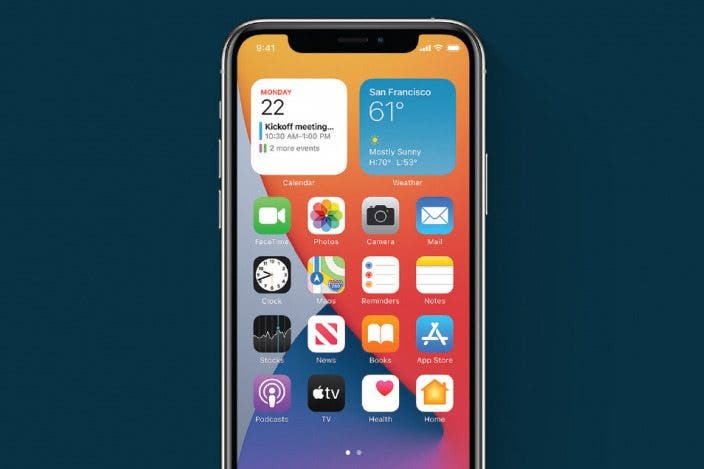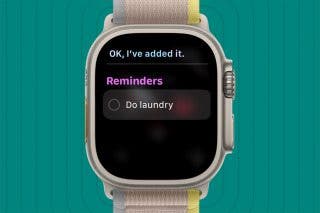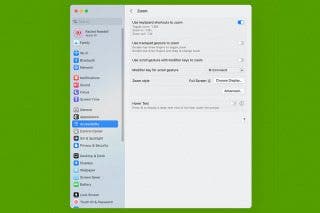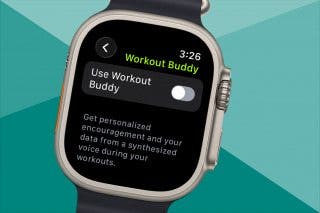The Top 4 Takeaways from the WWDC Keynote Apple Event


I’ve been covering the World Wide Developers Conference, Apple’s annual developer's conference, for a decade, and no year has felt as simultaneously surreal yet comfortingly familiar as when Tim Cook presented the Apple keynote address to an empty conference hall in June. Cook served up the usual healthy dose of dad jokes and self-congratulatory statements. Most importantly, WWDC was jam-packed with updates for all of Apple’s major operating systems., including iOS 14, iPadOS, WatchOS 7, and Big Sur, the latest MacOS. Here are my top four takeaways from WWDC.
Related: 5 Hidden Announcements from Apple's WWDC 2020
Apple Focuses on What It Does Best
Android fans and PC owners love to talk about specs. They’ll tell you how many gigabytes of RAM their smartphones and computers have, how fast the processor is, and how little they had to pay for it all. What Apple fans understand is that specs are less important than user experience.
The reason people are willing to spend more money on Apple products than on competitors’ products that have better specs is because Apple’s are so well designed and easy to use. An obsession with creating an amazing user experience has been the root of much of Apple’s success. The unofficial theme of all of Apple’s updates this year at WWDC was an improved user experience.
As excellent as Apple’s products are, its software updates still frequently miss the mark. When watching WWDC, I often cringe at Apple’s attempt to be cool (like when Apple announced that Animojis now track your tongue) or roll my eyes at a new feature that doesn’t seem useful (such as the ability to send someone your heartbeat). Too many times, Apple lets its marketing team lead the way on software development. But this year, almost all of the changes genuinely improve the user experience as opposed to just looking good in a TV ad.
Apple has also dedicated a lot of energy in recent years on building out its services such as Apple Music and Apple News as well as ancillary products such as the AirPods and Apple Card. This event marked a noticeable shift back to focusing on its core products.
Apple’s Rethinking of the Home Screen Is a Welcome Change
It’s strange to think that through thirteen versions of the iPhone’s operating system, the Home screen has remained pretty much unchanged. The grid of apps is simple and intuitive but ultimately feels limited for today’s iPhones. I have over three hundred apps on my phone, and they fill eleven screens. The days when I manually curated each app into a logical order or organized them into folders are long gone. I pretty much exclusively open apps from search. The addition of the App Library will be a useful tool for people like me who don’t want to take the time to manually organize their apps. I find Apple’s “Siri Suggestions” for apps in the Today View to be really useful, and the App Library will be a powerful extension of that functionality.
Because I don’t invest a lot of time organizing the apps on my Home screen, I’m going to be more than happy to replace most of them with widgets. I rarely navigate to the widgets in the Today View, but I use the complications on my Apple Watch constantly. The difference is that the iPhone hides the widgets away in the Today View, whereas watch complications are easy to view any time glance at my watch. Similarly, moving the widgets to the Home screen will allow me to easily see the useful information they offer whenever I open my phone.
Mac & iPad Are on a Collision Course
During the 2018 WWDC keynote, Apple executive Craig Federighi addressed the common question of whether Apple would ever merge the iPad and Mac operating systems by showing a slide that simply said, “No.” This moment became famous among reporters and fans because of how decisive it was and how different it was from Microsoft’s strategy. Two years later, Apple has technically held true to its word, but the lines between the two operating systems are slowly getting blurred. This year Apple added Bluetooth mouse support to the iPad, making it the only Apple product other than the Mac to have a mouse. In addition, Apple’s completely redesigned Mac operating system has a lot of user interface elements that look suspiciously similar to the iPad. Apple added a Control Center to the Mac as well as widgets to both the Mac and iPad. Finally, Apple announced that iPhone and iPad apps will be able to run natively on Macs that have Apple’s new Apple silicon processors (coming to market later this year). With all of these changes, it’s hard to imagine that the two operating systems will remain separate forever. Personally, I’ve long been a proponent of merging the operating systems. Apple has been trying to market the iPad as a laptop replacement for years, and while it has enough processing power to replace an entry-level laptop, the operating system is pretty limiting for the type of tasks required for most people’s professional work. While the changes help, the iPad still has a long way to go before I would ever be comfortable ditching my computer for one. Even when I travel, I tend to bring both devices with me.
Apple Continues to Ignore the HomePod
Suspiciously missing from the announcement was any mention of the HomePod. This was particularly disappointing because, after years of neglect (there has been no meaningful update since its release in 2018), Apple was rumored to finally be releasing the next generation of its smart speaker. Apple did announce after the keynote that users will now be able to access third-party music apps like Spotify through the HomePod, which is a major improvement.
Apple also added the ability to search the web via Siri, which will be very useful. All hope is not lost for those of us who own and love Apple’s smart speaker, but I was nonetheless disappointed. I hope to see Apple announce a new HomePod with additional functionality in September.
Full Steam Ahead for Apple
Sometimes when Apple ends its keynote, I look back and see all the updates as a bit incremental—but not this year! This was one of the most ambitious software updates I’ve seen from Apple in years. iOS was jam-packed with new features, and macOS has received a major redesign. In addition, Apple announced its plans to embark on a multiyear project to switch from Intel to ARM processors. It’s great to see that despite the current environment, Apple continues to plow ahead.

David Averbach
David Averbach is the CEO and Publisher of iPhone Life. In the last 13 years, he has shared his Apple expertise on multiple industry panels, was awarded FOLIO magazine’s 2014 media industry’s innovators 20 in Their 20s, taught classes for our premium subscribers, and co-hosted over 200 episodes of the iPhone Life Podcast. A lifelong Apple fan, David would be lost without his MacBook Pro, iPhone, iPad Pro, Apple Watch HomePod, Apple TV, and AirPods. In his free time, David enjoys optimizing his smart home setup, savoring a good cup of coffee, and traveling.


 August Garry
August Garry
 Rhett Intriago
Rhett Intriago
 Olena Kagui
Olena Kagui
 Rachel Needell
Rachel Needell

 Nicholas Naioti
Nicholas Naioti





 Donna Schill
Donna Schill



 Amy Spitzfaden Both
Amy Spitzfaden Both